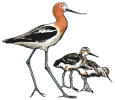Salinas River NWR forms partnerships with neighboring communities
by Tracy Flor Figueroa, Student Conservation Association (SCA) intern, San Francisco Bay NWR Complex
Salinas River National Wildlife Refuge
Formed in 1973, within 367 acres, this Refuge has six habitat types: Beach, dunes, salt marsh, saline ponds, Salinas River/lagoon, and grasslands. Located south of Moss Landing, it protects several threatened and endangered species, including Western snowy plover, Smith’s blue butterfly, and Monterey spineflower.
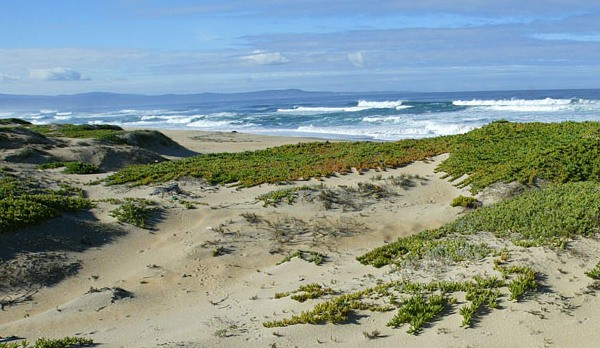
Salinas River National Wildlife Refuge. Credit USFWS.
Partnerships with Neighboring Communities
Take a car ride south of San Jose with me....As we approach the exit towards Salinas River National Wildlife Refuge (NWR) leaving Highway One, we can already tell the community of wildlife here is far unlike anything seen around the Bay area. We see artichokes fields left and right, a hundred yards away from paved roadways. We have now stepped onto solid agricultural grounds; we will keep driving on the dirt road towards a gated path. Then, walking on that path, we experience a sense of quiet, away from all the urban noises, and all you can hear are shorebirds flying over the saline pond ahead and coyote brushes disturbed by brush rabbits. Every point of view is different, but one feature unique to the Salinas River NWR demands our full attention. Our shoes dig into sand. Before us is the most intact dune ecosystems in the Monterey Bay area.
Since 1973, this small Refuge has been particularly valuable, providing various habitats and being located in the Pacific Flyway for migratory birds. A community of shorebirds, saltmarsh wildlife, and upland creatures have another close by neighbor full of citizens of many cultures and backgrounds. Castroville is the closest town to Salinas River NWR, four miles north. Salinas is a bit east, but also nearby.
The Salinas and Castroville communities have known the Refuge for decades but have not had a proper introduction. Recently, Refuge staff and volunteers were excited to have the residents of Castroville and Salinas finally get to know their Wildlife Refuge neighbor. The introduction required Refuge staff and volunteers to learn about the community first. With the majority of the residents being primarily Spanish-speaking, communicating in Spanish was essential.
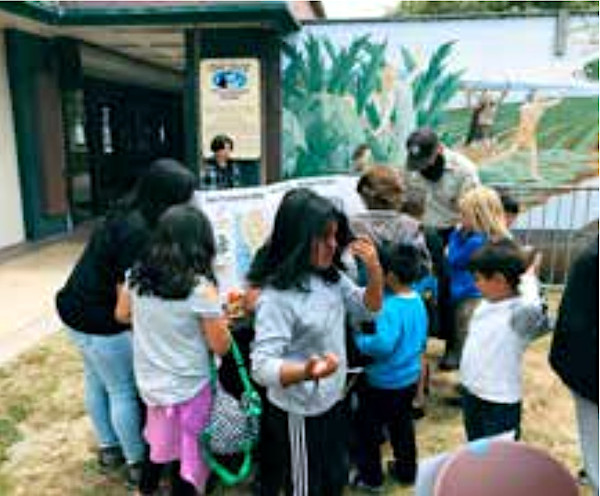
Miguel Marquez with Salinas youth.
Besides a common language, getting to know community culture was another partnership building factor. My team was from different Latino backgrounds, including Ivette Lopez from the Sacramento regional office, Miguel Marquez Refuge Ranger, and a FWS volunteer Yeimy Cifuentes. Together we achieved a connection with Salinas youth by introducing them to Salinas in a different light. Our partner through the success of our Take a Glimpse of Salinas program was Andy Ausonia Library director, David Tavarez. Soon we will have programs with Castroville residents.
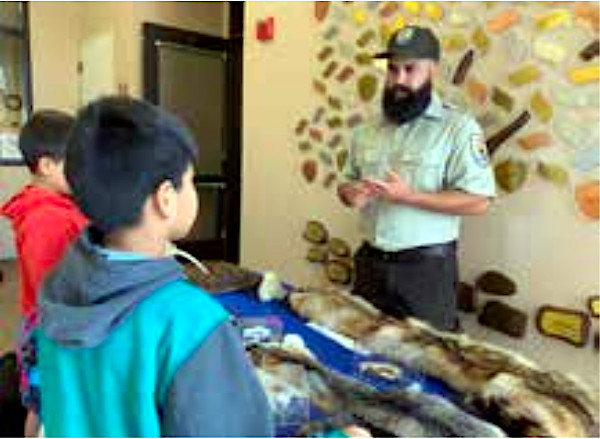
Miguel Marquez with Castroville youth.
Using shorebird classification and sand dune formation educational games, the children’s interest and prior knowledge of Salinas was sparked. They could not get enough of the activities and getting to know the Refuge Ranger. We had a flood of excited questions in both English and Spanish. A proper introduction has finally happened and we look forward to growing this relationship with Salinas and Castroville to establish a sustainable environmental educational program for the Salinas River NWR. Our goal was simply to get to know each other, we have begun developing partnerships, and we will continue to enhance these in the future.
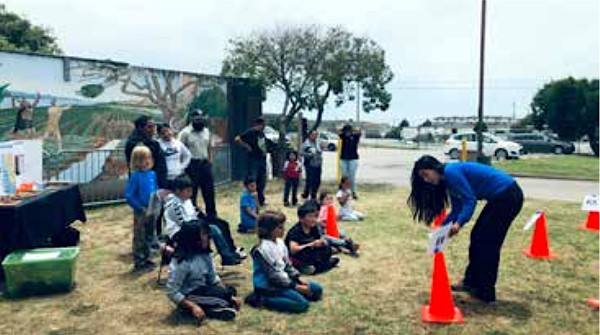
Salinas River National Wildlife Refuge staff leading a shorebird activity with Salinas youth.
